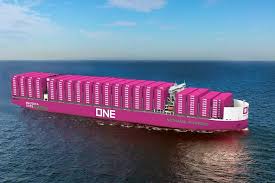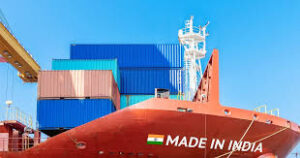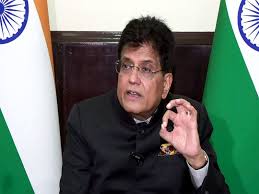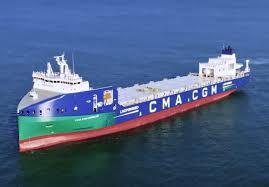Global trade is at a pivotal juncture where import tariffs dictate economic strategies, reshape supply chains, and redefine logistics efficiency. While these tariffs safeguard domestic industries, they also escalate costs, disrupt freight movement, and pose challenges for exporters and supply chain professionals. This edition delves into the far-reaching implications of tariff policies on logistics, warehousing, and trade resilience, bringing together expert perspectives on mitigating risks and optimising operations in a tariff-driven landscape.
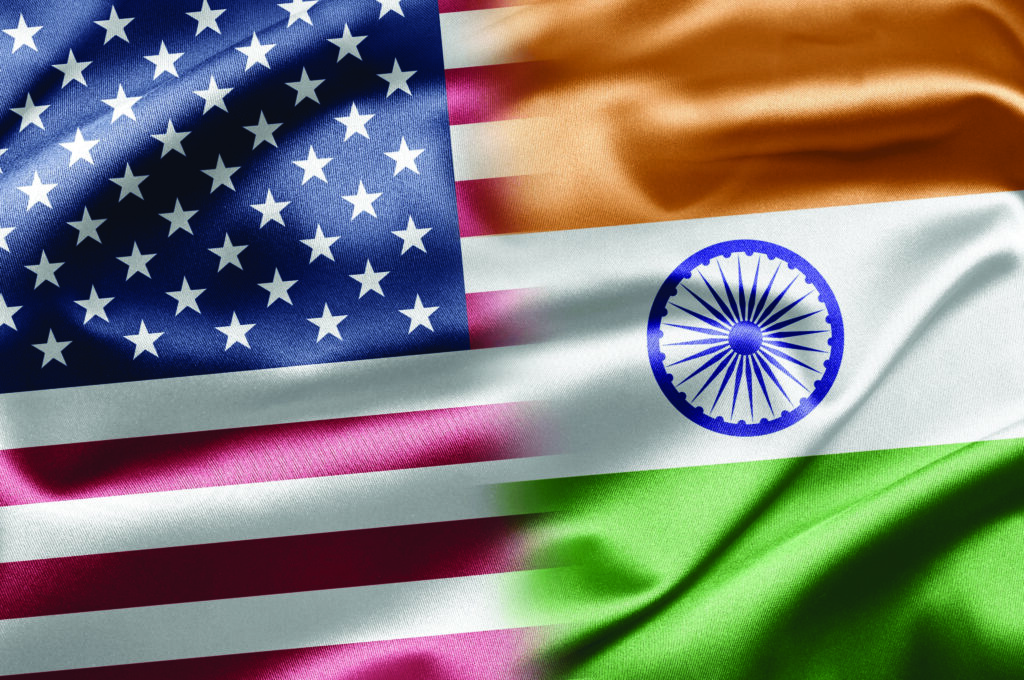
“Changing import tariffs in India hits logistics hard. You’re looking at increased transport costs and more complex supply chains. Higher tariffs mean higher import prices, delays, and a real customs headache, impacting efficiency.

To manage, you’ve got to play smart. Negotiate better contracts with your suppliers; that’s key. Invest in tech to streamline your supply chain and optimise it. And collaborate with customs experts; they’ll help you navigate those regulatory changes. Diversifying your supply chain routes and focusing on cost-effective logistics strategies? That’s your safety net against fluctuating tariffs.
Now, India’s $2 trillion export target? That’s a big deal, and tariffs and trade policies are critical. Reducing tariffs on raw materials and intermediates? That lowers production costs, makes our exports more competitive globally. Free trade agreements with key partners? That opens new markets and gives us preferential access. Simplifying customs and improving logistics? That slashes trade barriers and boosts efficiency.
We also need trade policies that push diversification into high-value sectors, like tech, pharmaceuticals, and green energy. That’ll really boost exports. And negotiating favourable terms in international forums? That ensures we get access to key markets while protecting our domestic industries. Basically, smart trade policies and tariff negotiations? They’re the backbone of enhancing our global competitiveness, expanding our reach, and hitting that ambitious export target.”

“Increased import tariffs inevitably result in a decline in the volume of imported goods, which significantly impacts logistics businesses. These duties directly affect commodity prices, creating a ripple effect on consumer demand. When tariffs rise, the cost of imported goods increases, making them less attractive, particularly to price-sensitive buyers. For instance, a product originally priced at₹100 would cost₹110 after a 10% tariff hike, potentially discouraging consumer purchases and reducing overall imports. This decline affects port operations, as commercial vehicles face longer waiting times for loading, while warehouse efficiency drops due to reduced pallet turnover and underutilised space.
Logistics service providers (LSPs) can address these challenges by redeploying their fleets to alternative routes or focusing on clients with higher profitability, thereby optimising asset utilisation. Additionally, by scaling manpower levels to align with reduced volumes, LSPs can maintain operational efficiency and minimise cost pressures.
India’s $2 trillion export target underscores the critical role of tariff negotiations and trade policies. As a global leader in service exports, India has leveraged its expertise in the service sector rather than manufacturing. To encourage domestic production, imposing higher tariffs on manufactured goods can drive the ‘Make in India’ initiative. With 70% of the population engaged in agriculture, priority should be given to producing goods for domestic consumption while exporting surplus, ensuring strategic reserves. Investments in workforce development, particularly in high-value service industries, can further strengthen India’s competitiveness, fostering sustainable economic growth and favourable global trade policies.”

“Changes to import tariffs in India disrupt logistics operations. We’re seeing a direct impact on operational costs. Higher duties inevitably inflate the cost of imported goods, forcing logistics companies to pass these expenses onto their customers. Moreover, the increased complexity of customs clearance, while not universally applicable, adds to the financial burden. This isn’t just about numbers; it’s about the ripple effect through the entire supply chain.
Frequent tariff adjustments create a climate of uncertainty. Supply chains, especially those reliant on just-in-time models, are disrupted by unpredictable lead times for customs clearance. Businesses are compelled to rethink inventory strategies, potentially leading to excess stock or, in some cases, hoarding of specific commodities due to international price fluctuations.
The landscape of trade patterns is also shifting. Companies are actively seeking alternative sourcing from countries with more favourable tariffs, requiring logistics firms to adapt to new routes. Simultaneously, increased import tariffs can incentivise domestic production, altering the volume of imports handled.
Market competitiveness is another critical area. Price pressures arise as higher tariffs translate to increased product costs, forcing logistics companies to devise innovative pricing strategies. Customer relations can also be strained as businesses grapple with tariff-induced price hikes.
To navigate these challenges, logistics companies must prioritise compliance. Investing in expertise and providing ongoing training are essential. Diversification of supply chains, including developing local suppliers, mitigates reliance on any single market. Technology integration, particularly supply chain software and inventory management solutions, enhances efficiency.
Transparent customer communication and the development of value-added services are crucial for maintaining trust. Active collaboration with government and industry groups ensures a voice in trade policy discussions. Finally, scenario planning and regular risk assessments are vital for proactive management.
India’s ambitious $2 trillion export target is inextricably linked to effective tariff negotiations and trade policies. Lower tariffs and FTAs are paramount for expanding market access. A balanced tariff regime protects domestic industries and reduces input costs. Streamlining trade processes and promoting exports are critical. Diversifying export markets and adhering to international standards enhance competitiveness. Tariff policies also influence foreign investment. Achieving this target necessitates a coordinated effort involving government, industry, and continuous adaptation to the global trade landscape.”

“Changing import taxes have a broad impact on Indian logistics companies, often resulting in delays, reduced efficiency, and higher operational costs. To address these challenges, businesses can reduce their reliance on imports by diversifying their supplier base and establishing robust, efficient supply chain systems. Enhancing inventory management can help cut storage expenses, while exploring alternative shipping routes and modes can mitigate disruptions and optimise costs.
Trade policies and tariff negotiations play a pivotal role in India’s pursuit of its $2 trillion export target. Well-structured trade agreements can enhance competitiveness, lower export costs, and open up new markets, while restrictive policies can hinder export growth and limit opportunities.
To achieve this ambitious export target, the Indian government must adopt a proactive approach by engaging in trade negotiations with key partner countries to secure tariff reductions or favourable terms. Simplifying export procedures and implementing policies that support export-orientated industries are equally critical. Moreover, strategic investments in trade infrastructure, such as the development of free trade warehousing zones, can further bolster India’s export capabilities.
By aligning tariff negotiations and trade policies with long-term economic objectives, India can create an environment that fosters export growth and positions the country as a competitive player in global markets. A strategic, collaborative approach between policymakers and industry stakeholders is essential to turning this vision into reality and achieving India’s $2 trillion export milestone.”

“It’s certainly ‘interesting times’ for logistics, with the current geopolitical shifts. Changing import tariffs directly impacts our cost structures and operational efficiency. Naturally, higher tariffs mean increased import costs, leading to higher freight, customs, and warehousing expenses.
Predicting the impact now is challenging; we are in a ‘wait and see’ phase. Our industry, having faced unprecedented challenges, remains resilient. We’ll navigate these challenges.
Now, achieving India’s $2 trillion export goal? That hinges on successful tariff negotiations. They’re vital for unlocking export opportunities and overcoming trade barriers. These negotiations are a core part of our strategy to address both external and internal factors affecting export performance.
What do we need? Negotiations that open new markets and boost the competitiveness of Indian goods. We need to streamline export processes by tackling trade barriers like regulations and certifications. Expanding trade partnerships with new nations and resolving tariff-related disputes are also essential for sustainable trade relationships.”

“Changing import tariffs have a profound impact on the cost structure and operational efficiency of logistics companies in India. Higher tariffs drive up the cost of imported goods, creating a cascading effect throughout the supply chain by increasing transportation, warehousing, and handling expenses. This not only diminishes product competitiveness in global markets but also complicates logistics efficiency.
To address these challenges, businesses are increasingly embracing digitalisation and automation. Leveraging technology to streamline customs clearance, optimise inventory management, and enhance end-to-end supply chain visibility is vital to counteracting rising costs. Additionally, cultivating robust supplier relationships and diversifying logistics partners help mitigate disruptions and build resilience. Active collaboration with industry bodies allows companies to anticipate regulatory shifts and align with evolving tariff policies. By integrating reforms like GST and adopting agile strategies, businesses can maintain cost-effective logistics operations even amidst fluctuating tariffs.
Tariff negotiations and trade policies are key enablers in India’s pursuit of its $2 trillion export target. Strategic tariff reductions and well-negotiated Free Trade Agreements (FTAs) can eliminate trade barriers, boosting the global competitiveness of Indian exports in sectors like electronics, textiles, and automotive. Simplified customs processes and regulatory reforms further minimise delays and reduce logistics costs, enhancing trade efficiency.
Achieving this ambitious target demands a collaborative effort between the government and private sector. Investments in infrastructure, digital integration, and globally aligned tariff policies will empower exporters to overcome challenges and unlock international market opportunities. A cohesive tariff strategy, supported by industry partnerships and policy reforms, will be instrumental in driving India’s export growth.”

“Import tariffs act as a trade barrier, increasing the cost of imported goods relative to domestic products. Typically applied as taxes or charges on importers, any fluctuations in tariffs pose significant challenges for logistics service providers (LSPs). Higher customs duties escalate costs, disrupt supply chains due to regulatory adjustments, and necessitate sourcing strategies from lower-tariff countries, adding to operational complexity and reducing overall efficiency.
An increase in import duties directly affects LSPs by causing delays at customs due to additional paperwork and processing time. This, in turn, raises storage costs for imported goods and drives up the overall cost of imports, potentially impacting businesses reliant on foreign components. Such increased costs may lead to lower import volumes, thereby reducing logistics demand.
Tariff changes also create bottlenecks at ports due to heightened documentation requirements, prolonging customs clearance and disrupting shipment schedules. Extended customs hold-ups force businesses to allocate more warehouse space, escalating storage expenses and leading to higher demurrage charges for containers. Moreover, frequent tariff modifications require continuous monitoring and adaptation to regulatory changes, intensifying bureaucratic pressures on LSPs.
However, there are potential benefits. Higher import taxes can encourage domestic production by making imported goods costlier, thereby increasing demand for local LSPs. Additionally, higher tariffs may act as a protective barrier for local businesses, fostering a more competitive domestic market.”

